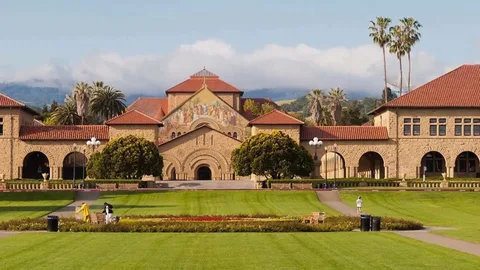In an age where data drives innovation, decision-making, and scientific discovery, the role of statistics and data science has never been more important. At the forefront of this revolution is Stanford University, widely regarded as one of the world’s top institutions for education and research in statistics and data science. Located in California’s Silicon Valley, Stanford’s Department of Statistics is a hub of academic excellence, interdisciplinary collaboration, and real-world impact.
A Legacy of Excellence
Founded in 1891, Stanford University has long been synonymous with excellence in education, technology, and research. The Department of Statistics, established in 1948, has played a vital role in shaping the university’s academic reputation. Over the decades, it has produced numerous groundbreaking research contributions, trained influential scholars, and evolved into a global center for statistical science.
The department consistently ranks among the top in the world, thanks to its outstanding faculty, rigorous curriculum, and pioneering work in both theoretical and applied statistics. Stanford’s holistic approach to statistics—bridging deep mathematical theory with practical application—has made it a magnet for top students and researchers from around the globe.
Innovative Academic Programs
Stanford offers a full range of degree programs in statistics, including a Bachelor of Science (BS), Master of Science (MS), and Doctor of Philosophy (PhD). Each program is designed to provide students with a strong foundation in statistical theory, computation, and methodology.
At the undergraduate level, students gain essential analytical and quantitative skills that prepare them for careers in data science, economics, finance, and other data-intensive fields. The graduate programs are more research-focused, emphasizing independent inquiry, advanced modeling, and interdisciplinary exploration.
Stanford’s curriculum is constantly evolving to reflect changes in the field. In recent years, courses in machine learning, data visualization, high-dimensional data analysis, and statistical computing have been integrated into the program, ensuring that students are equipped to handle modern data challenges.
Research That Shapes the Future
Stanford’s statistics faculty are among the most accomplished and respected in the world. They are leaders in a wide range of fields, including probability theory, Bayesian analysis, biostatistics, causal inference, environmental statistics, and machine learning. Many are members of prestigious organizations such as the National Academy of Sciences and recipients of awards like the COPSS Presidents’ Award and the MacArthur Fellowship.
Research at Stanford is characterized by its interdisciplinarity and real-world relevance. The Department of Statistics collaborates with various other departments—such as Computer Science, Electrical Engineering, Economics, and Biomedical Data Science—on cutting-edge projects that address critical issues in healthcare, technology, public policy, and climate science.
Major research areas include:
- Big Data and High-Dimensional Statistics
- Statistical Learning and Machine Learning
- Bayesian Inference and Computation
- Environmental and Ecological Modeling
- Data Privacy and Ethical AI
The department also houses the Statistical Consulting Service, where students and faculty work with researchers across the university to apply statistical methods to complex scientific problems.
Unparalleled Industry Connections
One of Stanford’s greatest strengths is its proximity to and integration with Silicon Valley, the global center for technology and innovation. This unique location provides students with exceptional access to internships, collaborative research opportunities, and career pathways in the tech industry.
Companies like Google, Apple, Meta, and Amazon routinely recruit Stanford statistics graduates for roles in data science, artificial intelligence, and quantitative analysis. The department’s strong ties to industry also mean that its academic programs are continuously informed by the latest developments in technology and business.
Moreover, Stanford alumni occupy influential roles across academia, industry, and government, creating a powerful network that benefits students and researchers alike.
Supportive Community and Learning Environment
Stanford’s Department of Statistics fosters a supportive and inclusive academic community. Students are encouraged to work closely with faculty, engage in collaborative research, and participate in seminars and workshops that expose them to the latest developments in the field.
Mentorship is a key component of the Stanford experience. Faculty members are deeply involved in student advising and provide personalized guidance to help each student reach their academic and career goals. Graduate students, in particular, benefit from small class sizes, individualized supervision, and numerous opportunities to publish research and present at conferences.
The department also emphasizes diversity and inclusion, actively recruiting students from underrepresented backgrounds and creating a welcoming environment for all.
State-of-the-Art Facilities and Resources
Stanford provides students and researchers with access to world-class facilities and computational resources. These include high-performance computing clusters, cutting-edge software tools, and specialized research centers such as:
- Stanford Data Science Initiative
- Institute for Computational and Mathematical Engineering (ICME)
- Center for Biomedical Informatics Research
- Stanford AI Lab
These centers offer students the opportunity to work on interdisciplinary projects, access large-scale data sets, and engage with faculty from across the university.
Global Impact and Future Directions
Stanford’s Department of Statistics is not only a leader in research and education but also a force for positive change in the world. Its faculty and students are tackling some of the most pressing challenges of our time, from improving healthcare outcomes through biostatistics to developing ethical frameworks for artificial intelligence.
Looking ahead, the department is committed to continuing its tradition of innovation and excellence. Plans for the future include expanding research in climate analytics, strengthening partnerships with global institutions, and enhancing the integration of statistics with other data-driven disciplines.
Conclusion
Stanford University’s Department of Statistics stands as a beacon of excellence in a world increasingly shaped by data. With its rigorous academic programs, world-renowned faculty, cutting-edge research, and unmatched industry connections, Stanford offers an environment where students not only learn the language of data but also become fluent in shaping the future with it.
Whether you aspire to be a researcher, a data scientist, an academic, or a leader in the private sector, Stanford provides the tools, training, and opportunities to turn your ambitions into reality. In the evolving landscape of statistics and data science, Stanford is not just participating—it is leading.



